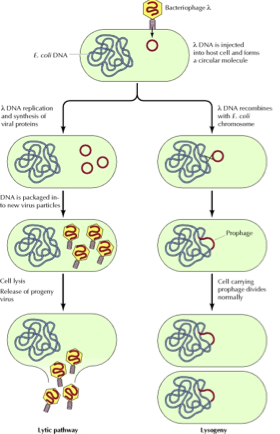Sign up for FlowVella
Sign up with FacebookAlready have an account? Sign in now
By registering you are agreeing to our
Terms of Service
Loading Flow



Viruses can reproduce only by invading a host cell
Viruses can reproduce one of two ways, each cycle taking place within a living host cell.
The first cycle is called the Lytic cycle. First, the virus attaches itself to the host cell, using it's pin at the bottom of its baseplate to insert its DNA into the host through its own rod and core. The virus DNA then travels down the rod into the cell from the capsule of the virus, making it's way into the host cell's nucleus. From there, the virus DNA takes control of the host cell and it's organelles, forcing the cell to create more and more copies of the virus until it bursts and dies.
Escherichia coli or E. coli, is a great example of this cycle, as it enters the body and immediately enters the Lytic cycle. Because of this, it is easier to get rid of. It's Lytic cycle lasts longer than some other viruses Lytic, therefore it takes longer for it to enter the Lysogenic cycle.

Lytic cycle